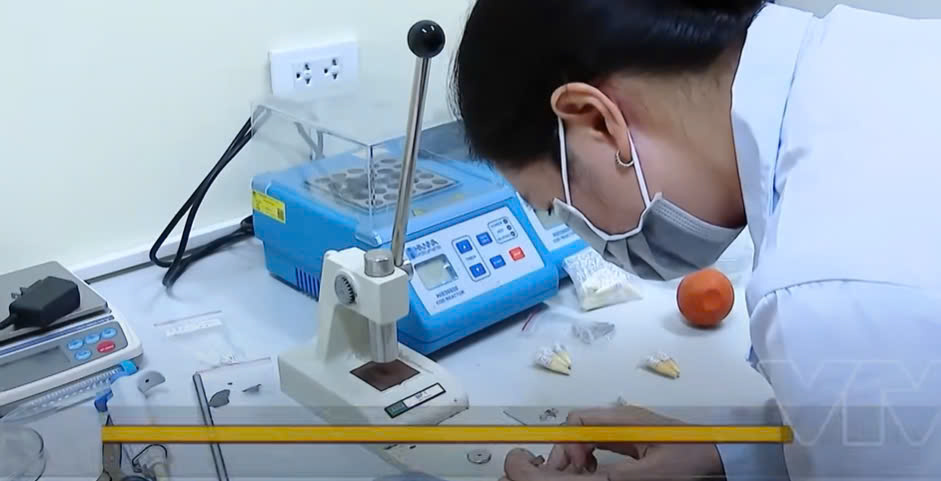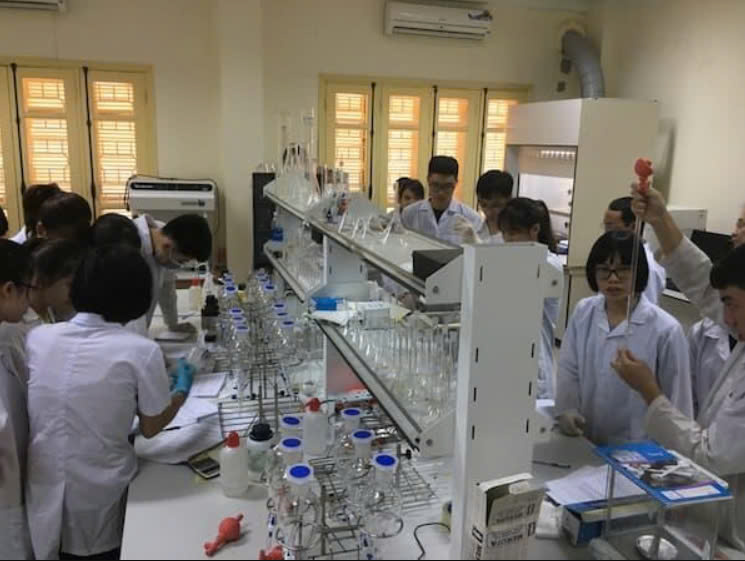On 16th March 2025, Project Manager – Professor Nguyen Van Noi had an interview with Vietnamese Nhan Dan (People) Newspaper regarding microfluidic technology.
In the interview, Professor Noi shared the great application of microfluidic technology in high-tech research and development to manufacture rapid analytical equipment, specifically useful for disease detection, food safety control and environmental quality.
“Interview: Application of Microfluidic Technology to Control Food Safety and Environmental Quality” Nhan Dan, 16 March, 2025
Ứng dụng công nghệ vi lưu kiểm soát an toàn thực phẩm và chất lượng môi trường
Q: Microfluidics is a new field in science and engineering that has been increasingly mentioned in recent times. What exactly is microfluidic technology, and in which areas is it currently being effectively applied?
A: Microfluidic technology involves the manipulation of fluids within micro-scale channels (micrometers in size). This field has gained considerable attention from scientists due to its outstanding advantages: compact device size, minimal sample volume requirement, reduced use of chemicals, high automation capability, fast reaction time, high accuracy, and cost-effectiveness. Microfluidics is being applied across many areas such as molecular biology research, chemical monitoring, and especially in biomedicine for disease detection, as well as in food safety control and environmental quality monitoring.
Q: What are the advantages of applying microfluidic technology in the development of advanced, rapid analytical devices compared to traditional methods of monitoring food safety and environmental quality?
A: Rapid industrialization and modernization have led to severe environmental pollution—especially from industrial waste—affecting soil, water, and air. Pollutants of concern include heavy metals, pesticides, persistent organic pollutants (POPs), and endocrine-disrupting chemicals, all of which pose significant risks to human health and ecosystems. Monitoring the environment around industrial zones, export processing zones, and craft villages remains a major challenge for developing countries like Vietnam.
Food safety is also facing alarming threats. According to the Ministry of Health, in 2024 there were 131 food poisoning incidents nationwide, affecting 4,796 people and causing 21 fatalities. The presence of unsafe food contaminated with harmful substances due to improper production, processing, management, storage, or use is deeply concerning.
From a trade perspective, Vietnam is a strong exporter of agricultural, forestry, and fishery products. However, entering high-standard markets like the U.S., EU, and Japan requires proven product quality—especially safety. Strict control over pesticide residues in agricultural goods, antibiotics in seafood, heavy metals, organic pollutants, and microbiological criteria is essential throughout all stages of production. This is increasingly important in light of incidents where Vietnamese agricultural and seafood products have been returned for failing to meet quality standards.
A pressing question is: How can we rapidly and accurately detect environmental pollutants and foodborne toxins? Surveys by experts show that current analytical methods used in Vietnam are costly and complex. Therefore, developing high-tech, easy-to-use, low-cost rapid testing devices is urgently needed to effectively ensure food safety and environmental quality.
One notable international collaborative project is the “Development of Rapid, User-Friendly Analytical Devices and Human Resource Capacity for Food Safety and Environmental Monitoring” project. Led by Vietnam National University, Hanoi (VNU) and funded by the Government of Japan through the SATREPS (Science and Technology Research Partnership for Sustainable Development) program*, this project offers a comprehensive solution—including human resources, equipment, and methodology—to address product quality and environmental issues. It contributes to sustainable economic development, boosts exports, and protects the environment.
Professor Nguyen Van Noi, Project Manager and Head of the Key Laboratory for Advanced Materials for Green Growth at the VNU University of Science, stated:
“Applying microfluidic technology allows for trace-level analysis of toxins in food and environmental pollutants such as heavy metals and pesticide residues. The accuracy is comparable to conventional lab equipment, but with significantly reduced analysis time—from days or hours to just minutes or seconds. It also minimizes chemical use, provides high sensitivity, and does not require highly skilled operators. This equipment is designed to meet the needs of both end users and regulatory agencies.”
*SATREPS is a JST (Japan Science and Technology Agency) and JICA (Japan International Cooperation Agency) program for research projects targeting global issues and involving partnerships between researchers in Japan and developing countries.




コメント